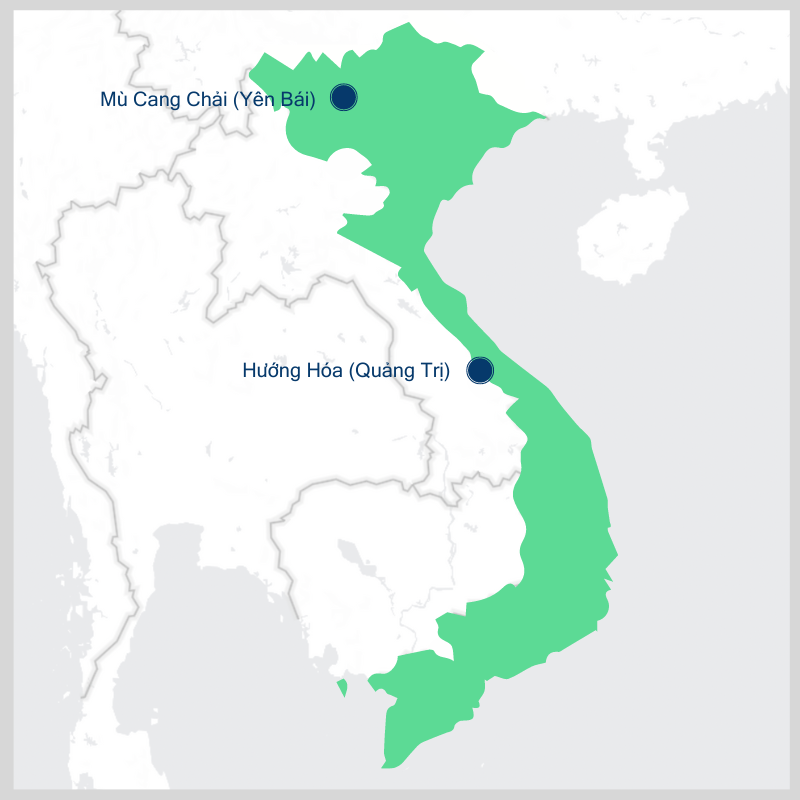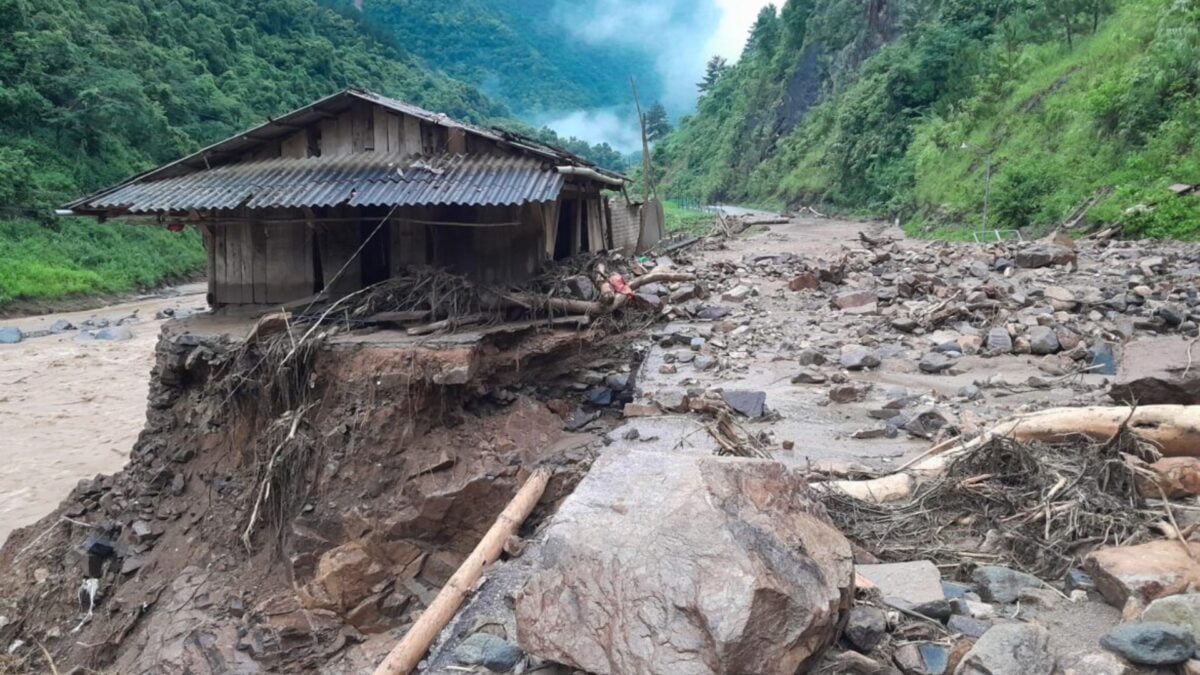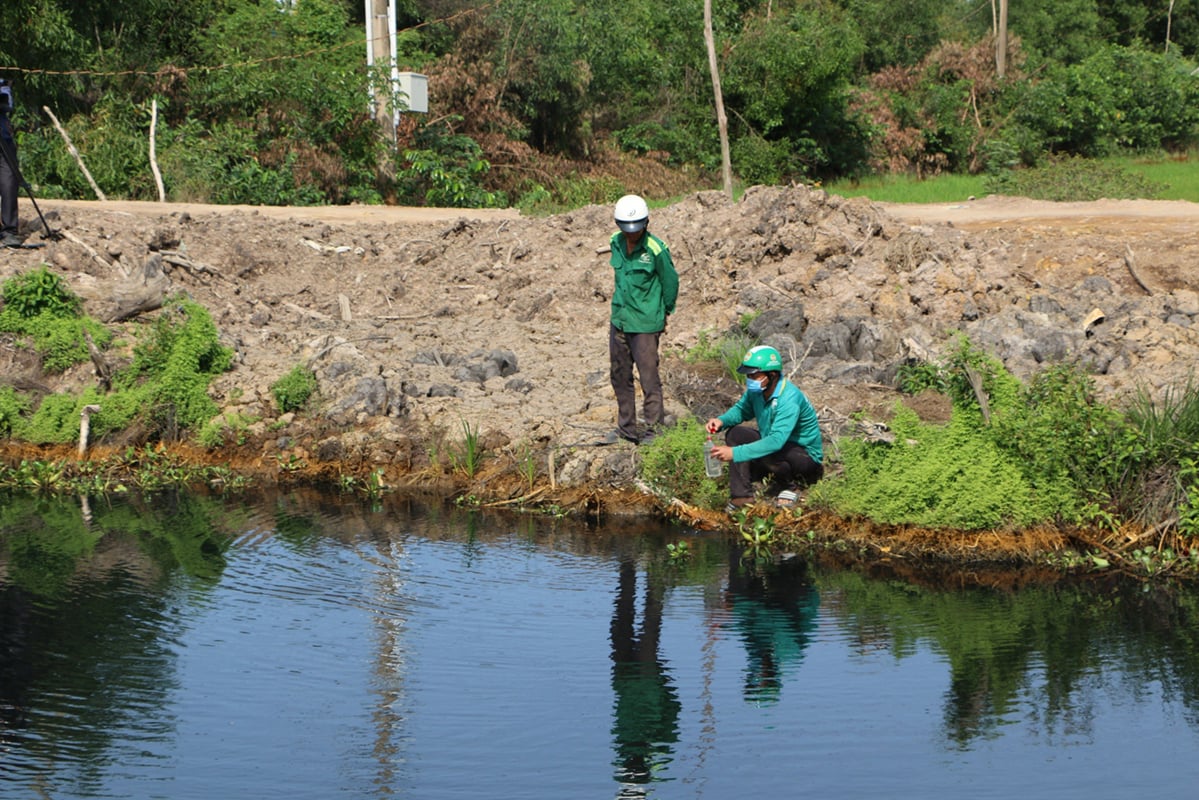MÙ CANG CHẢI, VIỆT NAM – It was about 7pm on August 5, 2023, when A Lầu, in the middle of a family dinner, saw trees, black sludge and rocks crashing down beside his house in the flickering light of his torch. Grabbing his wife and two grandchildren, he scrambled, knocking on his neighbors’ doors.
“Run now or die, the flood is here!” A Lầu shouted.

“There was no time to collect anything but ourselves,” the 50-year-old farmer recalled. The nearest village was only two kilometers away, yet it took A Lầu, wearing nothing but his shorts, all night to crawl out of the mountains.
A Lầu’s neighbors, Giàng Thị Chù and Cứ A Tùng, also waded through waist-deep water all night, but lost Tùng’s father to the deadly deluge of water. Two days later, his body was found at a hydropower plant about 10 kilometers from the village.
That night, the flood killed three, destroyed more than 700 houses and severed 200 kilometers of crucial roads, completely isolating the communes of Lao Chải, Khao Mang and Hồ Bốn. About 10,000 people were isolated and left without electricity, water or a phone signal.
Two months after the flood, A Lầu’s once green, lush rice fields remained a barren, rocky ground. Both families spent their last savings and 30 million VND (US$1,178) of government assistance money rebuilding their houses, yet no one has any idea about how to restore their livelihoods.
Since the flood, A Lầu’s two children have moved to Hanoi, seeing no future at home.
Every rainy season, residents of the Vietnamese highlands – mostly impoverished ethnic minorities – face deadly floods and landslides. And as the climate becomes more unpredictable and deforestation worsens, these communities are finding themselves trapped in a vicious cycle of poverty.
Without long-term solutions, many people, like A Lầu’s children, have chosen to leave.


Increased severity, unpredictability
From 2001 to 2019, the northern mountainous provinces have endured more than 1,500 floods and landslides, most of which occurred in steep, rugged terrain where ethnic minorities reside.
Flash floods and landslides in the highlands are also becoming increasingly unpredictable and difficult to forecast within the past 15 years, according to a 2021 and 2024 research.
For the past eight years or so, Lao Chải commune chairman Sùng A Bình says his government has tried to evacuate people at the first signs of cracks in their houses, yet there is little they can do when a flood arrives.
In central Viet Nam, highland residents can no longer predict the intensity of such disasters.

The Bru – Vân Kiều people in Hướng Việt commune in Quảng Trị province, have been living with annual flooding for centuries, yet they had not seen the collapse of entire hills until the deadly mudslide in 2020. After many months of rain, the mountains had absorbed so much water that it seeped out like thick porridge, rather than simply flowing across the surface.
“Five people were working in rice fields near Sa Mù Pass when the hill exploded and hurled three of them to one side,” recounted 80-year-old Hồ Thanh Vân. This is the first time Vân and the village’s eldest residents had witnessed the annual disaster on such an immense scale and intensity.
“On the other side, the gushing soil swallowed my two children from their feet to their necks. The more they struggled, the more they sank until they were completely submerged,” Vân recalled.
After taking Vân’s children, the mudslide destroyed homes and turned rice fields into a desert filled with sand, rocks and wood that villagers have still not finished clearing up.
Hướng Việt was isolated for a month, only accessible by helicopter. The Pa Long stream that provided drinking and irrigation water for generations was swallowed completely by the landslide and disappeared into the ground.


Dwindling resilience
Ecological disasters are not only disruptive, but they also exhaust a community’s resources and cripple their resilience.
The flood and landslide left A Lầu’s family destitute. Everything they had accumulated over a lifetime – their wooden house built five years ago, 2,000 square meters of rice fields, a cornfield yielding 100 bags of rice and corn annually, 24 pigs, and 120 ducks – was buried under a thick layer of soil and rock.
In the neighboring commune of Hồ Bốn, the flood damaged 121 homes and flattened more than 50 hectares of crops.
In Hướng Hoá, three years after a similar event, 400 hectares of rice fields remain uncultivable because the source of irrigation has been destroyed. In Hướng Việt commune, 50 hectares of former rice paddies are now covered in sand.
Local governments are also struggling. In poor provinces like Yên Bái, the constant strain of recovering from natural disasters has drained financial resources. The August 5, 2023, flood cost Mù Cang Chải damages amounting to 100 billion VND ($3.9 million), two-thirds of the district’s 2023 budget.
According to the province’s Deputy Chairman, Lò Văn Hà, in 2018 alone, Yên Bái suffered 1,000 billion VND ($39m) in damages from flooding, an amount equaling almost half of the province’s annual budget of 2,200 billion VND ($86m).
For now, most local governments require budget assistance from the central government. In 2023, by October, 30 provinces had requested urgent government support for landslide recovery, totaling more than 15,000 billion VND ($589m).


The challenge of relocation
Ecologists has been warning since the late 1990s, when Viet Nam had the fastest deforestation rate in the region, that without forest restoration, the country would face severe ecological degradation and catastrophic economic and social consequences.
Decades later, the situation has not changed. Relocation is the only practical temporary solution, and the area of land viable for this solution is diminishing.
Professor Đỗ Minh Đức at the Institute of Geotechnics and Environment at the Vietnam National University Ha Noi, who has been creating disaster risk maps for many years, told Mekong Eye that the work is immensely challenging.
Stable land for relocation is scarce, both Đức and local government leaders said.
“The relocation areas must avoid risks such as large-scale landslides, slips due to construction on ancient slide masses, riverbank and streambank erosion, blockages causing mudslide floods, and even small clusters of landslides caused by slope excavation for housing or road construction. Then, where is the land for relocation?” Đức asked.
Meanwhile, the only communities temporarily safe from ecological disasters are those in primary forests.
“We rarely experience landslides when we go into the primary forest,” said Hờ A Hừ, the chairman of Kim Nọi commune.
“The eastern area of Hương Sơn commune, located to the east-northeast of Hướng Hóa district, is a high mountain area that also serves as a primary forest conservation zone. Here, landslide phenomena are almost never observed,” says a 2022 report assessing the flood and landslide situation in Hướng Hóa by the district’s agricultural department.
“When heavy rain falls, the forest can retain 60-70% of the water on tree trunks and leaves. This alone helps reduce the likelihood of flash floods by two-thirds. When primary forests are preserved, the likelihood of [flash floods] is extremely low,” Đức says.
Yet relying on this kind of shelter may not be feasible at the moment. By 2012, dense old-growth forests covered only 4.6% of the total national forest area, according to a report by the Center for International Forestry Research (CIFOR). Forest cover now reaches 41% thanks to reforestation, yet the quality of natural forests has consistently deteriorated.
“The area of biodiversity-rich forests in low-slope areas has almost disappeared,” says the CIFOR report.
Hills destroyed by landslides are now either left barren or covered with monocrop plantations of acacia – a crop that further depletes the soil.
Even when relocation zones are identified, implementation remains a daunting task, due to socio-economic implications.

This was the case in Mù Cang Chải district in Yên Bái province. Three months after the August 5 flood and landslide, the district had only been able to relocate 30 households in total due to a lack of viable land.
Given the escalating risks of climate change, restoring natural forests is imperative. The long-term costs of disasters are estimated at 6.8% of Viet Nam’s annual GDP, and the costs of damage are 15 times higher than preventive measures.
Yet, restoration could take decades, or even a lifetime. For now, both risk assessments and larger-scale relocation proposals still exceed local budgets and are in dire need of substantial central funding.
Meanwhile, impoverished highlanders who are experiencing increasingly frequent or severe flooding are now more prone to migrate. Even among the deeply rooted Bru-Vân Kiều community in Quang Tri, about 200 people have left one of the communes.
A Lầu, who is entering his twilight years and much less likely to find work in the cities, was still contemplating the kind of crop he could grow on his 2,000 square meter of sandy farmland.
This story was originally published in Vietnamese in Tia Sáng Magazine on January 18, 2024. It was translated into English by AI and edited by Mekong Eye.





